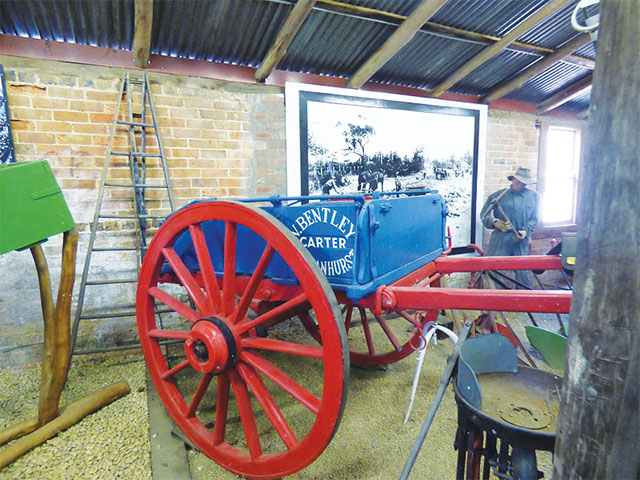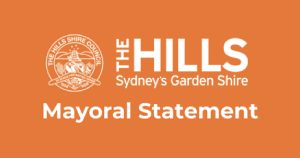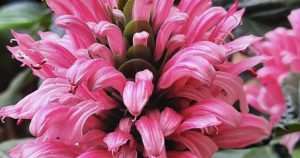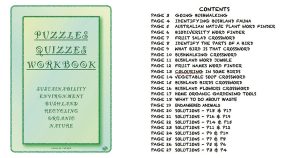[vc_row][vc_column width=”1/6″ offset=”vc_col-lg-1/5 vc_col-md-1/5 vc_col-xs-1/5″][us_image image=”84129″ size=”thumbnail” align=”left” style=”circle” has_ratio=”1″][/vc_column][vc_column width=”1/12″ offset=”vc_col-lg-4/5 vc_col-md-4/5 vc_col-xs-4/5″][vc_column_text]By Ivor Jones[/vc_column_text][us_post_date][/vc_column][/vc_row][vc_row][vc_column][vc_column_text]We are certainly fortunate in the Hills and Hawkesbury districts having a number of historic properties open to the general public. Some of these properties have been gifted by descendants of pioneering families such as the Roughley and Fagan families of Dural and Galston to local communities. Other properties have been acquired by local councils and handed to volunteer committees to manage and operate on behalf of the local community.
In 1980, Bruce Fagan moved out of his family home of “Netherby” at Galston and the home with the adjoining land was placed under the trusteeship of Hornsby Shire Council. After the death of Bruce in 1984 came an end to the prominence of the Fagans who had been prominent in the Arcadia, Dural and Galston district for 130 years.
Bruce’s grandfather William emigrated to Australia from Londonderry, Ireland in 1848 at the age of 20. After arrival he once said that “he went looking for a wife” and soon after he discovered and married Ann Waddell. This linked two of the pioneering families of the Galston district. In 1854 William purchased 70 acres of land at Arcadia for one pound per acre. This land adjoined a grant of 600 acres owned by George Hall at Galston. During William’s travel along the Hawkesbury region he had observed early orchards and felt that his land at Arcadia would be suitable for growing citrus trees. This became the foundation of a vast citrus growing business as the family and William’s property interests grew. Two of his sons, William ll and Samuel, formed a partnership called Fagan Brothers at the corner of Carters and Galston roads.
Samuel was the youngest son of William and Ann and was born in the old stone house on the original property at Arcadia and the partnership with his older brother William ll was dissolved when Sam purchased extensive property at Galston which included part of George Hall’s grant from Nicholson and Griffiths plus land owned by Herbert Hudson along Carrs Rd. Sam married in 1890 to Emma High from Highs Rd Castle Hill and they had three sons and four daughters. The gradual closing down of the Fagan’s citrus growing empire, by Samuel, during the Great Depression of the 1930s saw the start of orchards reaching the end of their economic production. The youngest member of Sam’s family was Bruce who had never married and had placed his property under the trusteeship of Hornsby Shire Council in 1980. Whilst Bruce’s parents and siblings had established an extensive citrus growing business, Bruce’s interest lay in cattle and particularly the Jersey dairy breed and this led to a top quality breeding programme. Bruce became a well-respected expert and his services were very much in demand at the Royal Easter Show, the Castle Hill Show and in country shows elsewhere.

When Bruce moved out of his home “Netherby” the furniture and other bric-a-brac was all removed by the family as it contained some very valuable antiques. The family took photographs and sketched where everything was so that the trustees had a good idea of what the place looked like. Former Hornsby councillor, Ron Payne, and a handful of dedicated workers had the task of restoring the home to its former glory. They searched the state for period furniture and other items that fitted with the home.
Ron Payne said that “pieces of furniture were arriving from all over the place. A lot had been sitting in backyard sheds for years without being realised”. Ron told a journalist, Allison Bone, that “It’s amazing some of the places we have found items”. He went on to tell a tale of a dresser that was recovered from a chicken coop where it had been used a hen roost. “When we got the dresser back to Fagan Park it was covered in fowl manure and we didn’t know how to go about getting it off” he said.
“Anyway, we thought about if we could just wet it down and scrape it off but as soon as the water hit it, it just turned to a thick paste and there was no way we were going to remove it. In the end we had to get a highpressured hose to blast the stuff off.
But the dresser is now in position in the homestead and no one is any the wiser”.
Thousands of items were donated by local families for the restoration and much was used to add to additional museums created in the barns within Fagan Park.
Fagan Park is now one of the main attractions in the Hills district with great walks, picnic areas and naturally, the Netherby homestead and its gardens and barns.[/vc_column_text][/vc_column][/vc_row]








